| |
|
|
|
HOME GUNSMITH SPECIALS – EARLY PROJECT GUNS:
Here is a selection of late 18TH – early 19TH
Century firearms that have survived with the primary
“bones” intact and in very good condition, but each one
requires some effort to restore some of the smaller
parts to make them complete. Priced accordingly, these
pieces are well worth restoring and each represents an
opportunity to add these to your collection at a
considerably reduced initial investment. Each is listed
below with individual descriptions and accompanying
photographs.
|
|
NO. 1 KNUBLEY BRASS TURN BARREL MUFF
PISTOL: Original, in "like new" unfired
condition. Only part missing is the wood one piece grip
which I'm not sure was ever present. Knowing the
collection where this pistol surfaced, I suspect this
was "new old stock" that the owner picked up in one his
purchases from a dealer in England. The collector had
taken this pistol apart and in so doing he disengaged
the springs inside the frame which like any other lock
control the hammer, sear and trigger. All of the
springs are present and there is no indication that any
of the parts were lost or broken, the springs need to be
reset and the pistol grip fashioned. (0734) $350
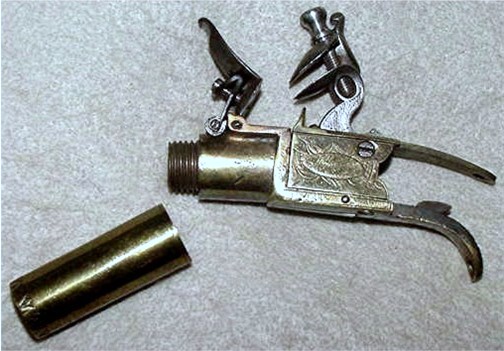 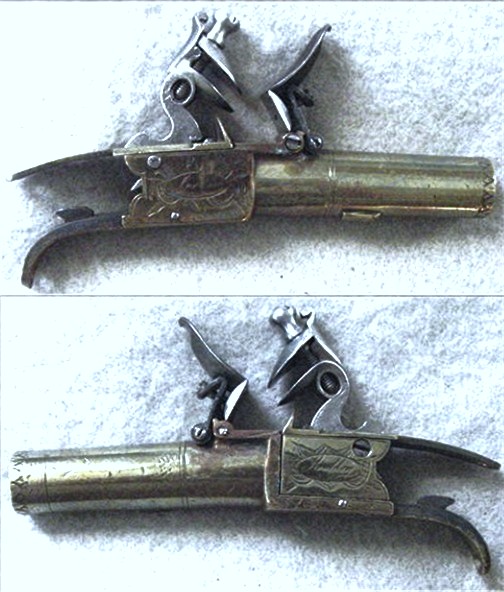 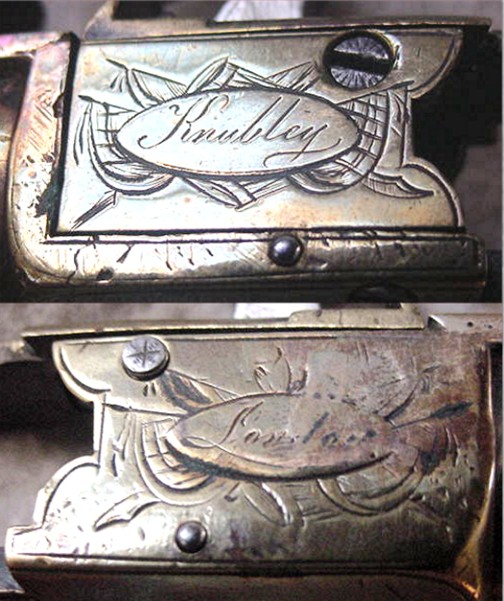 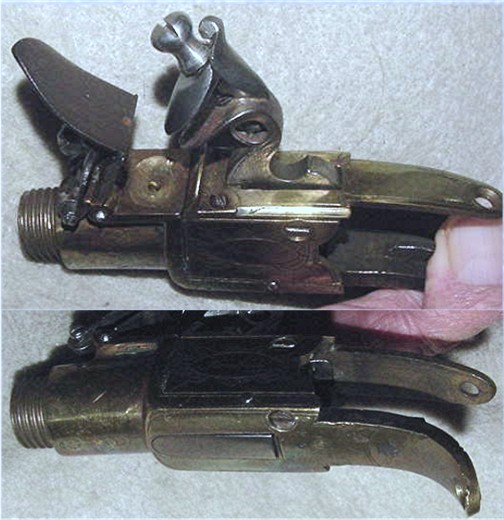 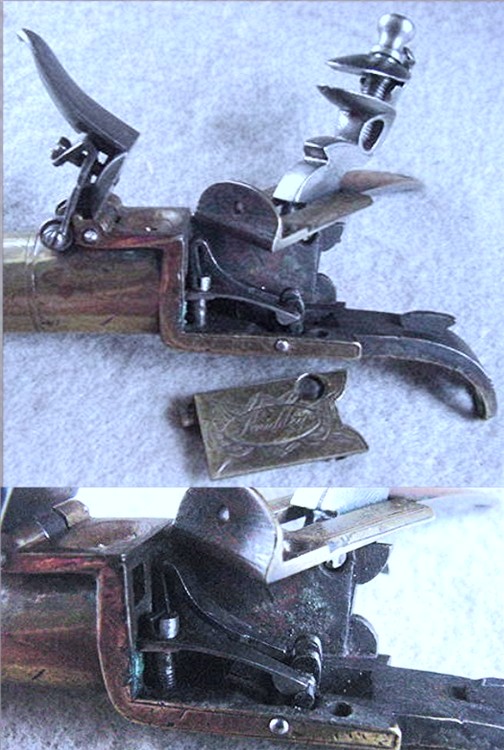 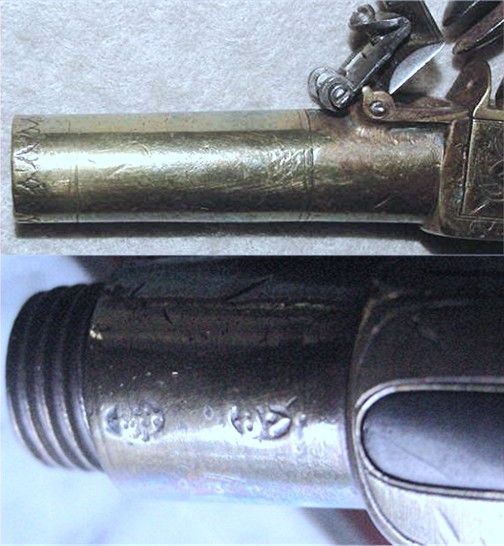
|
|
NOTE: The long guns offered below
are of the style of trade gun which emerged in the
1820’s, referred to in original trading company
correspondence as “Fine Rifles”. Incorporating specific
features which the traders believed would appeal to the
Indians, who were seeking a gun which was lighter and
more delicate than the standard Northwest Gun design and
one that would incorporate more decorative features.
These long guns were made with both rifled and smooth
bores – the term “Fine Rifles” indicating the overall
style of the gun and not the specific feature of the
bore.
You'll note that the Ketland and the Manton Rifles
listed below are both fitted with a silver colored touch
hole liner. In both cases, these are original
platinum touch hole liners, a recognizable and well
documented feature of these "Fine Rifles" and is not
evidence of a reconversion to flintlock.
These “Fine Rifle” trade guns are examined in detail in
The Encyclopedia of Trade Guns, Volume 1 – Firearms
of the Fur Trade written by James Hanson and
published by the Museum of the Fur Trade. If your
interest lies in the firearms of the Indian trade in
North America, this volume is a “must have.”
|
|
NO. 2 KETLAND FINE RIFLE:
Barrel is 44" long; the lock and barrel both bear
Ketland’s maker’s marks. The barrel is fitted with a
patent breech. The furniture is silver. The lock is
missing all the internal and external parts, but the
real value lies in the Ketland mark. The stock is
solid; nose cap is present but fell off - its included
with the gun. Both barrel keys were missing when I
obtained the gun, but I have included two unfinished
original keys of the proper size. The upper ramrod pipe
is missing, but it is of a standard pattern which would
be easily restored. The stock is solid, but has a burl
opening on left rear edge of butt. Otherwise the wood
has a pleasant naturally aged patina. (0736) $550
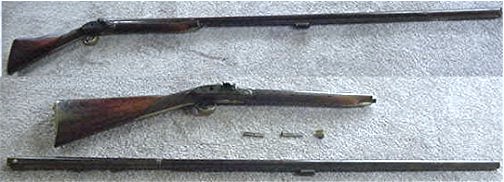 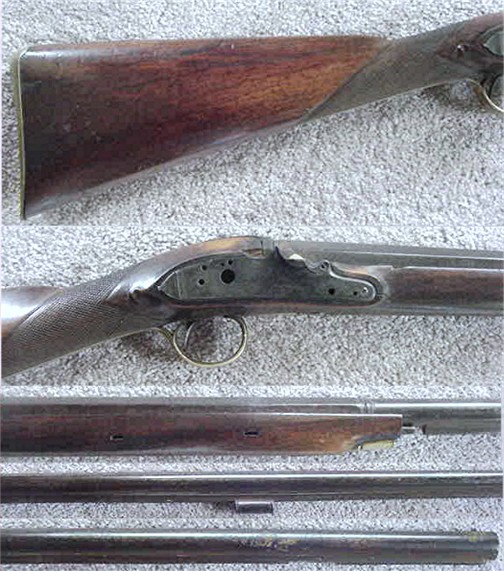 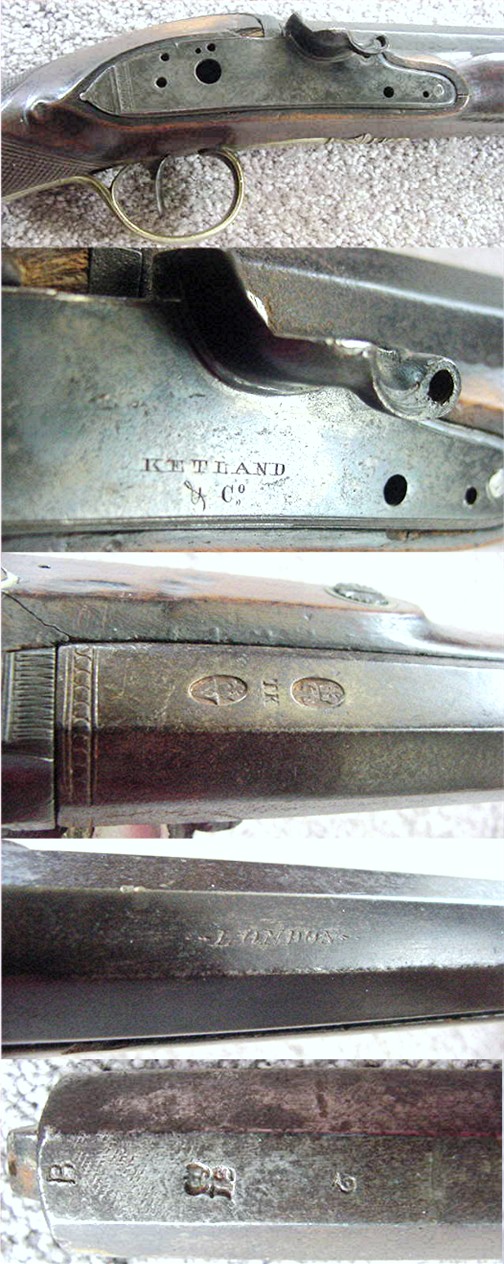 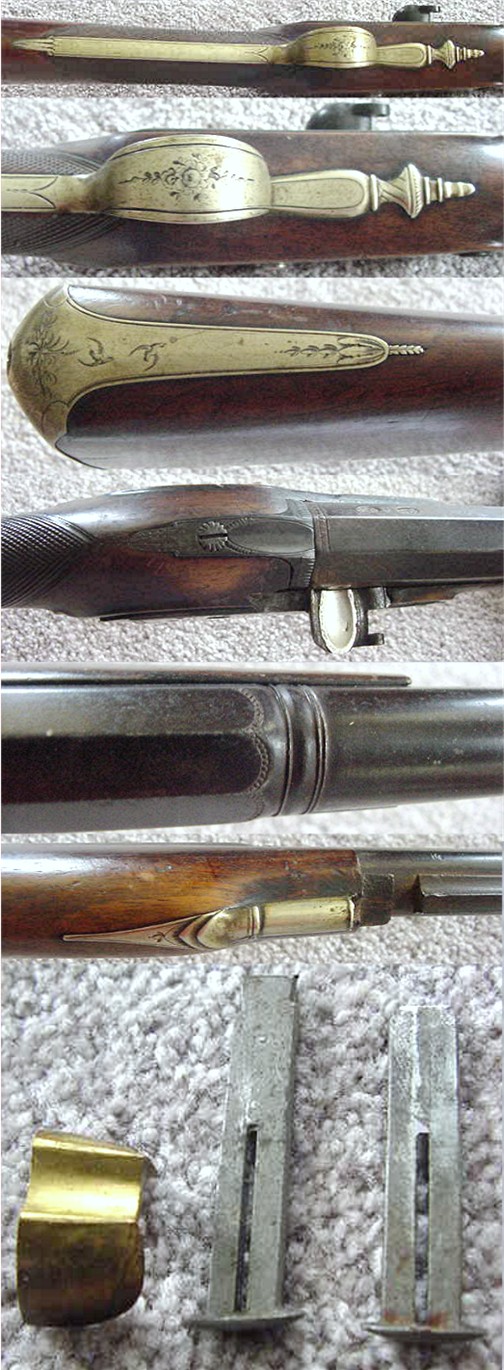 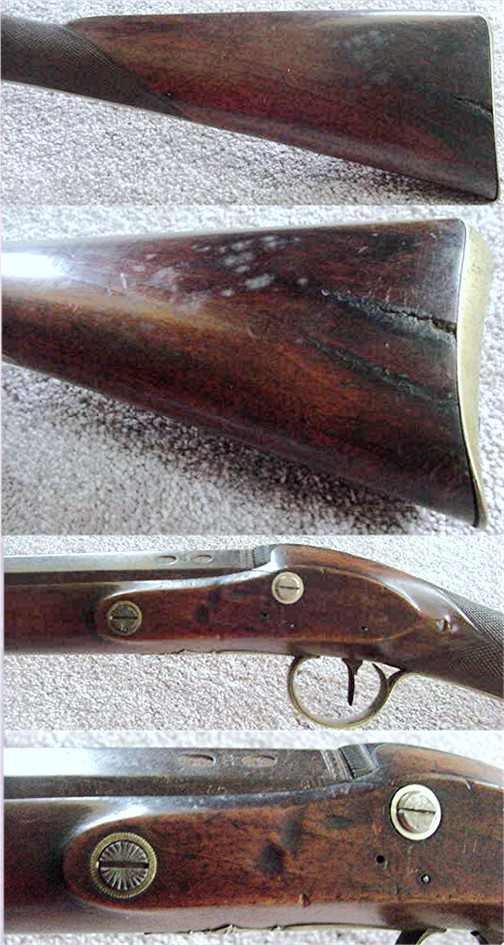
|
|
NO. 3 MANTON FINE RIFLE:
Barrel is 30 1/2" long with Damascus striping, and has a
patent breech. The furniture is iron. The lock is
missing the mainspring, and frizzen. One barrel key was
missing and an unfinished original key. The stock is
solid
and retains a very good finish. There is a large
piece of walnut inlet into the left side of the butt
stock where the shooter’s cheek would rest, obviously
done when the stock was originally shaped. (0735) $550
  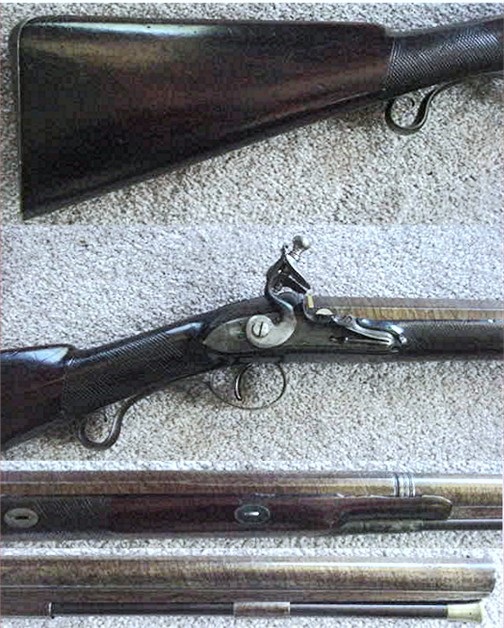 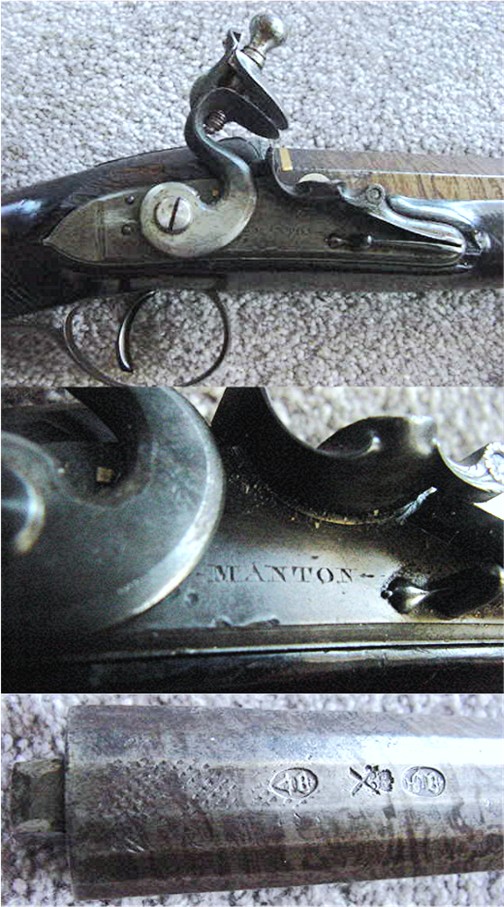 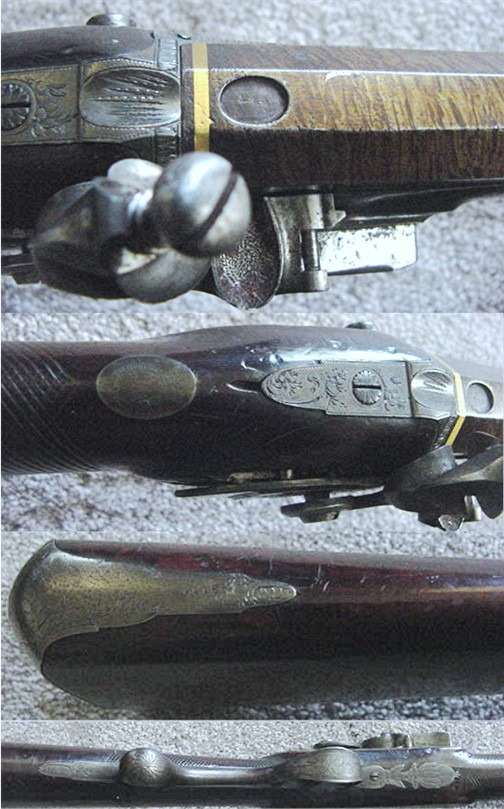 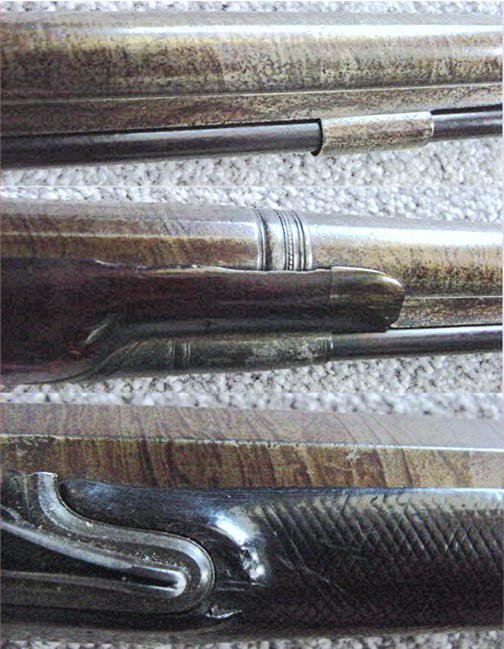 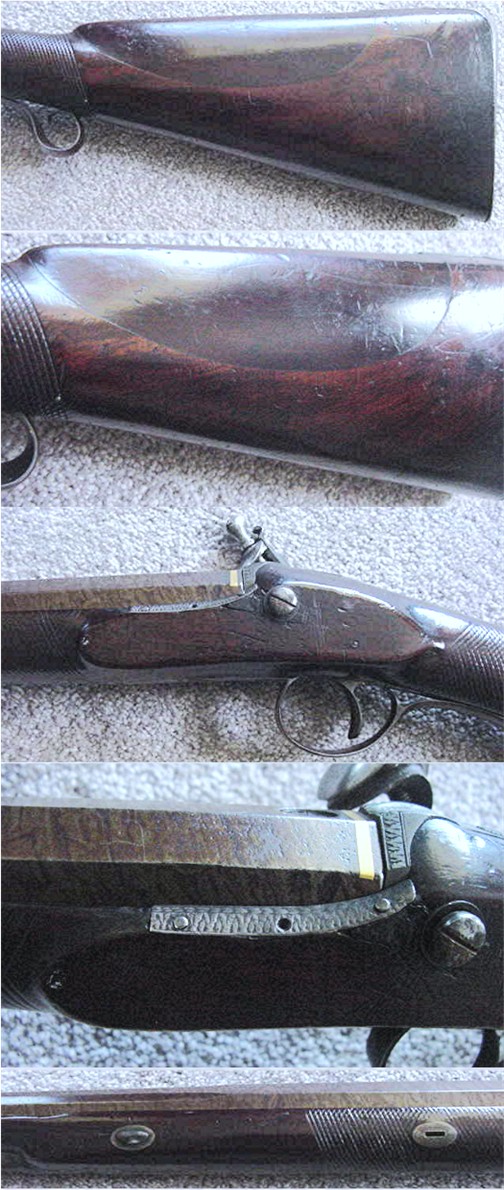
|
|
NO. 4 WILKINSON FINE RIFLE:
Barrel is 31 1/2" long with a patent breech. Was been
converted from flintlock to percussion during the period
of use with the drum-and-nipple conversion. The
furniture is iron. The lock is missing all internal
parts. Stock is solid and retains a very good finish.
(0737) $450
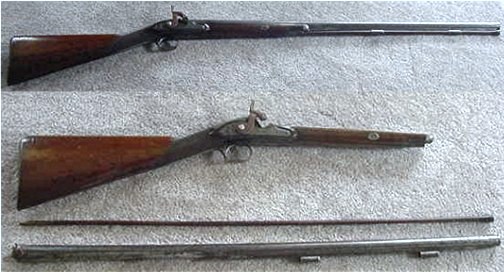 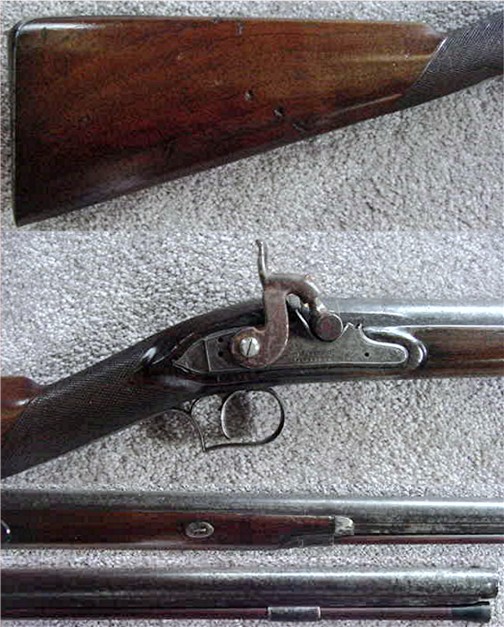  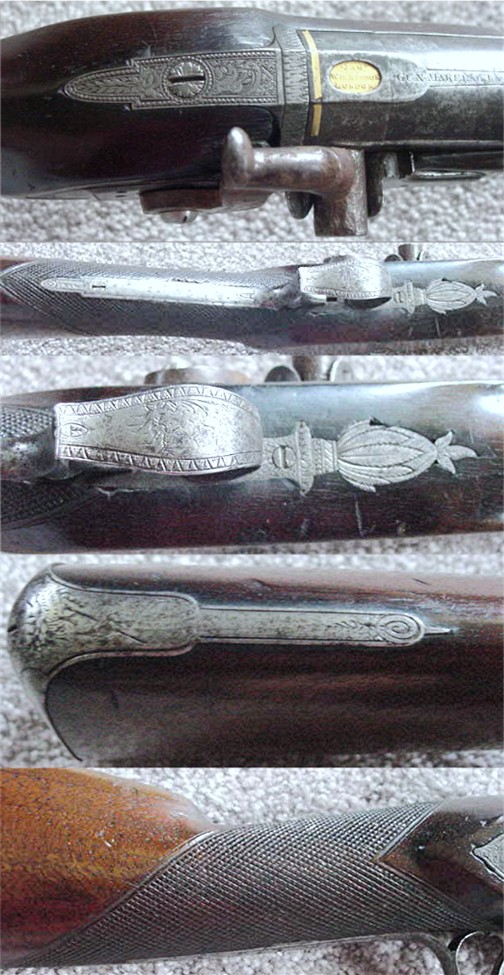 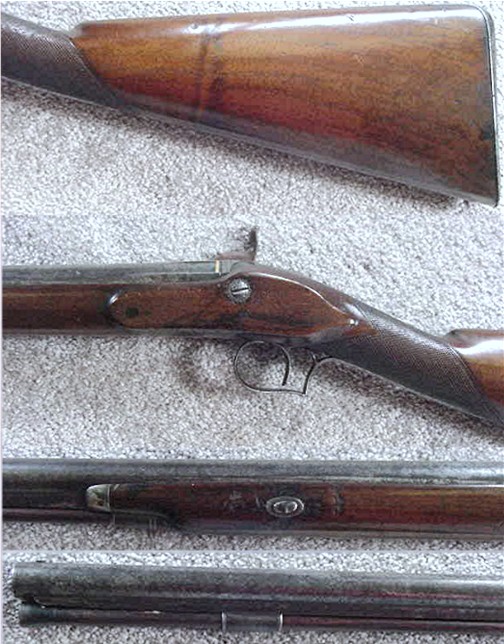 |
|
|
|
|
|
|
|
|
|
|
|
|
|
|
|
|
|
|
|
|
|
|
|
|

